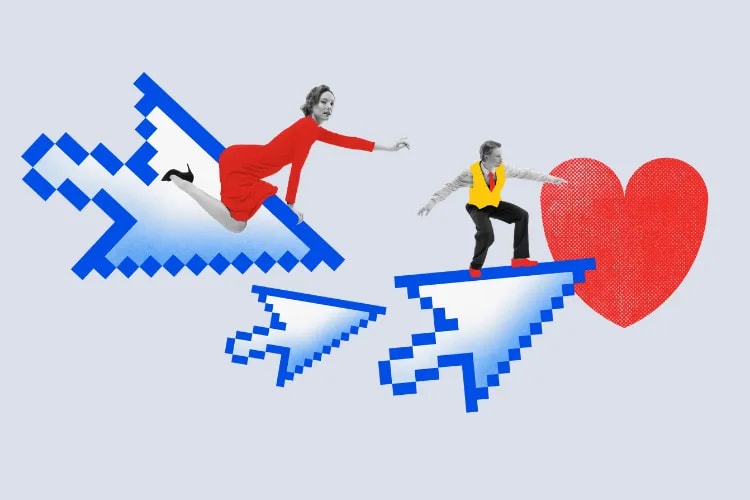
Corporate events should feel like a highlight on the calendar—not an obligation. When they’re designed to be social, hands-on, and genuinely fun, they boost connection, spark creativity, and make work feel more human. Recent attendee research shows people increasingly prefer interactive, tactile formats and purposeful networking over lecture-style sessions. That means the best team experiences get people moving, making, and collaborating.
Below, you’ll find 16 fun corporate event ideas across outdoor adventures, arts and crafts, culinary experiences, games, and remote-friendly formats—so you can match the right idea to your team size, interests, and budget. Use these as plug-and-play concepts or remix them into your next offsite or quarterly team day.
Attendees are gravitating toward interactive, hands-on formats and meaningful networking—so design gatherings that are social, tactile, and built for connection. (PCMA/Freeman, 2024)
Fun isn’t fluff—it’s strategy. Team experiences that are active and social can improve how people communicate, collaborate, and cope with stress. With global engagement slipping to 21% in 2024–2025, investing in morale and belonging is more than nice to have—it’s business-critical. (Gallup)
Improved communication and collaboration: Shared challenges encourage clearer roles and faster feedback loops.
Higher morale and job satisfaction: Positive shared memories boost loyalty and motivation.
Enhanced creativity: Movement, play, and making things with your hands stimulate divergent thinking.
Stronger culture and belonging: Inclusive, purpose-built events help people feel seen and connected.
The Loopyah Content Team shares expert insights, practical guides, and industry updates to help event organizers create unforgettable experiences and stay ahead in the event planning world.
planning
Reduced stress and burnout: Physical activity and low-stakes creativity are proven buffers against strain.
Design a light, movement-based challenge in a local green space—think scavenger hunts, waypoint puzzles, or Amazing Race–style stations. Rotate roles (navigator, clue-solver, timekeeper) so everyone contributes. Wrap with a picnic or BBQ to decompress and swap stories.
Budget tip: Use free park permits and volunteer facilitators; provide simple snacks and hydration stations.
Accessibility: Offer shorter routes, seated clue stations, and clear maps for all abilities.

Bring puzzles to the streets or a botanical garden. Small teams race to solve themed riddles while practicing clear communication and shared situational awareness. Portable kits or vendor-led experiences make setup easy.
Pro move: Keep team sizes to 4–6 and cap the experience at 60–90 minutes to maintain energy and focus.
Host a low-stakes, high-fun field day with volleyball, soccer, cornhole, or relay races. Mix teams across departments to spark new connections. Award playful prizes: Best Team Spirit, Most Creative Mascot, Comeback Champs.
Well-being: Include warm-up stretches, sunscreen, water, shade, and optional low-impact games.
Inclusion: Offer non-competitive roles (scorekeeper, announcer, DJ) and a mix of skill levels.
Put brushes in hands and let a local artist guide everyone step-by-step. Choose a beginner-friendly theme and provide a relaxed playlist. Offer wine, beer, and great mocktails, plus snacks that won’t stain canvases.
Why it works: Low-stakes creativity reduces stress and naturally encourages casual conversation.
A tactile, mindful activity that slows the pace and sparks cross-team chats. Partner with a local studio for a hand-building class; glazing and kiln firing can be done after, with pickup during a future team coffee.
Accessibility: Provide adaptive tools, seated workstations, and clear instructions with visual examples.
Improv’s “Yes, and…” principle builds psychological safety and agile communication fast. A facilitator leads short games that practice listening, status shifts, and idea-building—perfect for teams that present or collaborate frequently.
Few activities bond people like making a meal together. Choose a theme—Italian, Mexican, plant-based—and assign stations: chopping, sautéing, plating. End with a communal feast and recipe cards to take home.

Dietary inclusion: Offer robust vegetarian, vegan, gluten-free, and halal/kosher options; label clearly.
Remote-friendly twist: Ship ingredient kits and run a 60-minute virtual cook-along.
Split into squads to craft signature sips. Provide fresh juices, herbs, garnishes, and zero-proof spirits so everyone can participate. Judges score on taste, presentation, and a fun story behind the drink name.
Safety first: Set clear limits, feature alcohol-free options prominently, and pair with substantial snacks.
Rent out a retro arcade or bring in pop-up cabinets and consoles. Hand out play cards, run a high-score leaderboard, and celebrate mini-wins throughout the night. The nostalgia factor lowers inhibitions and boosts joy quickly.
Pro tip: Add a photo booth and a playlist of crowd-pleasers for instant atmosphere.
Assign characters, hand out clue packets, and let teams interrogate, deduce, and reveal. This interactive format develops shared situational awareness and collaborative problem-solving—without feeling like “training.”
Logistics: Choose a theme (1920s speakeasy, spy caper), brief players in advance, and seat cross-functional teams together.
Curate easy-to-learn cooperative or light strategy games (Codenames, Just One, 7 Wonders, Ticket to Ride). Rotate tables every 20–30 minutes so people meet new teammates and learn different collaboration styles.
Scoring: Award points for teamwork and creative problem-solving—not only for winning—to reinforce the right behaviors.
Partner with a local nonprofit for a high-impact day: park cleanup, food bank sorting, school supply packing. Service amplifies purpose and connection while delivering tangible community value.
Design for impact: Align the cause with your company values and measure outcomes (meals packed, trees planted).
A classic for a reason: clock-ticking puzzles demand communication, role clarity, and fast decision-making. Debrief afterward to connect the experience to work habits—what helped, what hindered, and how you’ll collaborate next time.
Pro tip: Mix veterans and new hires to accelerate onboarding and cross-team rapport.
Keep it snappy with short rounds and teams of 4–6. Blend categories—pop culture, company history, geography—and slip in a “wild card” creative prompt for bonus points. Rotate quizmasters to involve more people.
Pro tip: Add a round that celebrates employee fun facts to spark conversation between departments.
Great for distributed teams. Keep groups small (4–6) and sessions to 45–60 minutes to reduce fatigue and keep engagement high. Encourage cameras on for nonverbal cues and assign rotating roles (clue tracker, timekeeper).
Run a quarterly cadence of low-lift virtual games—Pictionary, bingo, lightning trivia, or a collaborative build challenge. Create a shared playlist and celebrate participation with virtual badges or shout-outs in your team channel.
When you’re ready to spread the word wider, these creative event promotion ideas will help you build buzz.
Match the event to your goal, team size, and constraints. Here’s a quick decision guide:
Goal = Connection: Park team challenge, cooking class, volunteer day.
Goal = Creativity: Painting and sip, pottery, improv workshop.
Goal = Energy boost: Sports day, arcade night, trivia.
Hybrid teams: Virtual escape room, online game night, remote cook-along.
New to planning? Start here: Event Planning Checklist for a step-by-step guide from concept to debrief.
The most effective team events are interactive, social, and inclusive. Choose formats that get people moving, making, or solving something together—and you’ll see returns in connection, creativity, and resilience. Pull from these 16 fun corporate event ideas, mix in your team’s personality, and keep iterating based on feedback.
When you’re ready to bring your plan to life, streamline invites, RSVPs, and promotion with the right tools—and spend more time enjoying the event with your team.

planning









planning
planning
planning
planning
planning
planning
planning
growth
growth